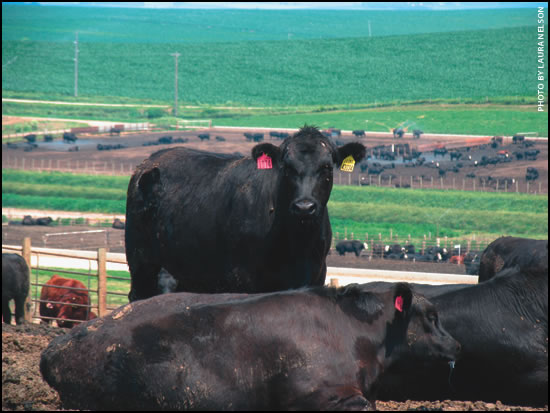
How Traits Correlate to Grid Premiums
Getting the most out of value-based marketing by region and quality grade.
When you get a bonus on grid cattle, sometimes it's easier to count your blessings than to ask why. But Tom Brink, senior vice president for Five Rivers Cattle Feeding, says taking a look at discounts and premiums can help you get more of the latter. Tapping into their database, Brink analyzed more than 300,000 cattle records for correlations with grid components. The results are based on a handful of value-based marketing options that mirror those popular in the industry.
"Southern" cattle sold in Kansas and Texas were compared to "northern" cattle in Colorado and Nebraska to show regional differences.
"The south is almost always starved for quality grade," Brink says. "Because of that, when we have those southern cattle that do grade, it's pretty easy for them to earn a sizeable grid premium."
USDA Prime and Choice grade had a solid correlation of 0.6 to earning grid premiums in the south.
"That's a very strong positive relationship, the strongest you see of all the different traits looked at," he says. But that drops to 0.35 in the north.
"It's still meaningful, that's for sure," Brink says, noting the moderate correlation. It's topped by bonuses for yield grade (YG) 1s and 2s at 0.39 and discounts for heavies and YG 4s and 5s, both at -0.46, strongly negative.
"We struggle a little more with heavies and yield grade as an industry in the northern geographies, so that shows up on the negative side," he says.
In the south, Brink says better YG is still desirable, but it actually shows up as a negative (-0.24) correlation.
"Intuitively that does not make sense, because on virtually any grid you get paid a premium for more YG 1s and 2s," he says. "The quality grade influence is so strong that the cattle that graded well brought back such a positive premium that it actually offset the fact they probably had a few less YG 1s and 2s."
| Table 1: Traits correlated with grid premiums | ||
Region: |
South (KS-TX) |
North (CO-NE) |
No. steers & heifers |
n=222,557 |
n=113,858 |
Correlation
|
||
| Prime/Choice | 0.60 |
0.35 |
| Dress Percent | 0.37 |
0.22 |
| YG 4&5 | 0.00 |
-0.46 |
| YG 1&2 | -0.24 |
0.39 |
| Heavies | -0.29 |
-0.46 |
| Darks | -0.32 |
-0.08 |
| Standards | -0.49 |
-0.21 |
So what do all of these relationships mean?
Simply put, cutability and quality are both important keys to getting more dollars, but within southern cattle the quality grades are especially rewarded. Northern cattle are expected to hit those high marks and then some.
"If your cattle are grading 70% Choice, just average in the north, should you be satisfied with that?" Brink asks. "No, you wouldn't want to quit there, because there is more opportunity for the cattle that can do better."
However, northern packing plants typically run 12% to 15% outs, with some weeks eclipsing 20%.
"That is a big number, to have one in six carcasses coming through as a nonconforming carcass," he says. "We have missed the mark as an industry when we do that."
He pointed out YG and heavies are both a genetic and feeding-management problem. Northern cattle are more Angus-influenced, and Brink attributes the better grading to that, but he says it also brings a challenge "to keep working on those yield grades."
Fortunately, the American Angus Association measures and tracks those traits, providing dollar value indexes ($Values) such as $YG (dollar yield grade) and $B (dollar beef) as producer selection aids.
"Those are tools that not every breed has, but the Angus breed does and they work well," he says.
Just as breeders watch genetic connections to get all they want out of an animal, perhaps feeders should consider these or their own set of premium and discount correlations to get the most out of value-based marketing.
Comment on this article.





